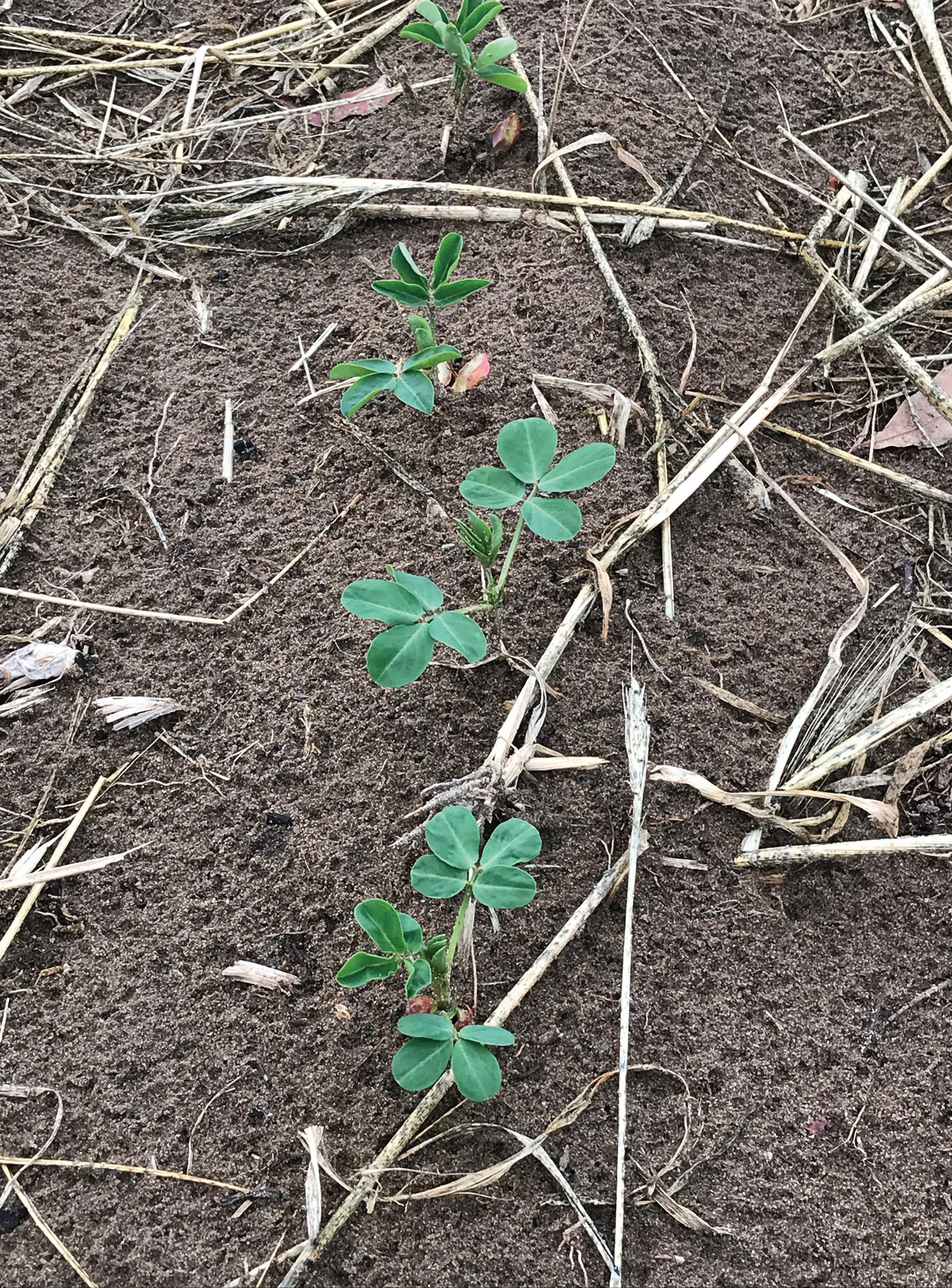










ONE GROWER PUBLISHING, LLC THE PEANUT PRODUCER'SMARKETING & PRODUCTION MAGAZINE www.peanutgrower.com PEANUT GROWER The MARCH 2023 Extended Economic Outlook: Acreage Increase Expected Thrips and TSWV: Why The Relationship Matters 3 Pre-Plant Disease Management Tips
Over 23 years, we’ve allocated more than $44 million to research projects.
We make the best use of production research dollars so you can make the best use of your land and resources.




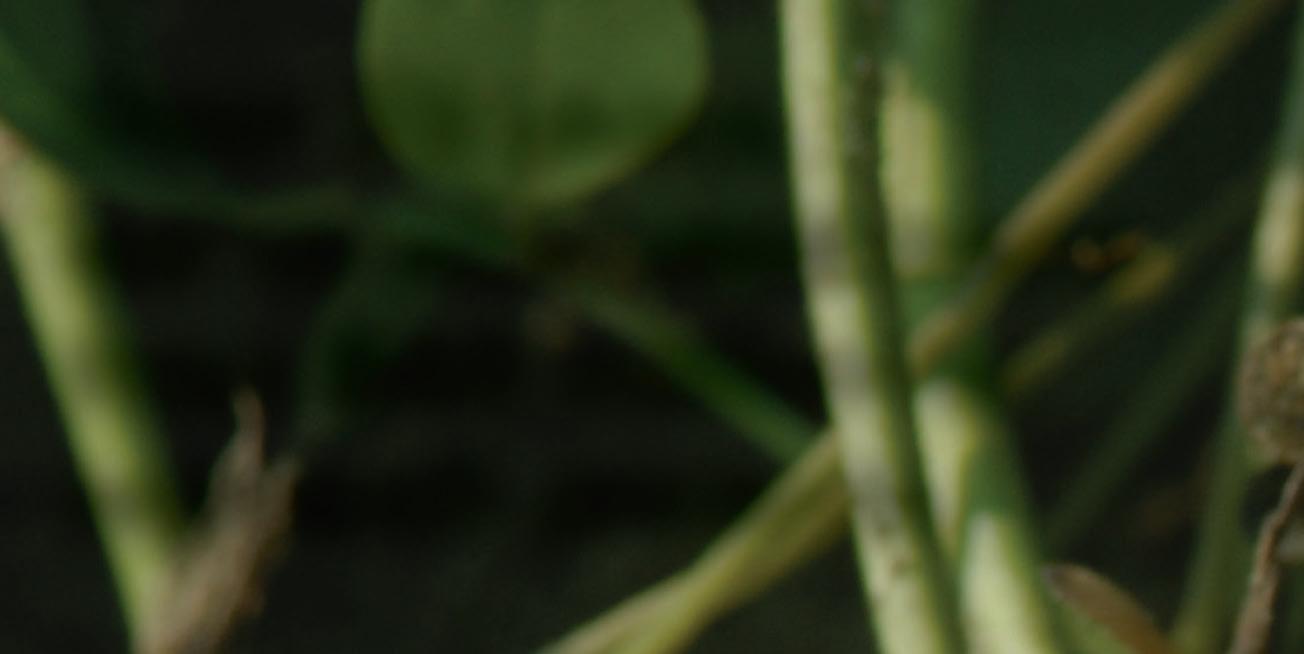

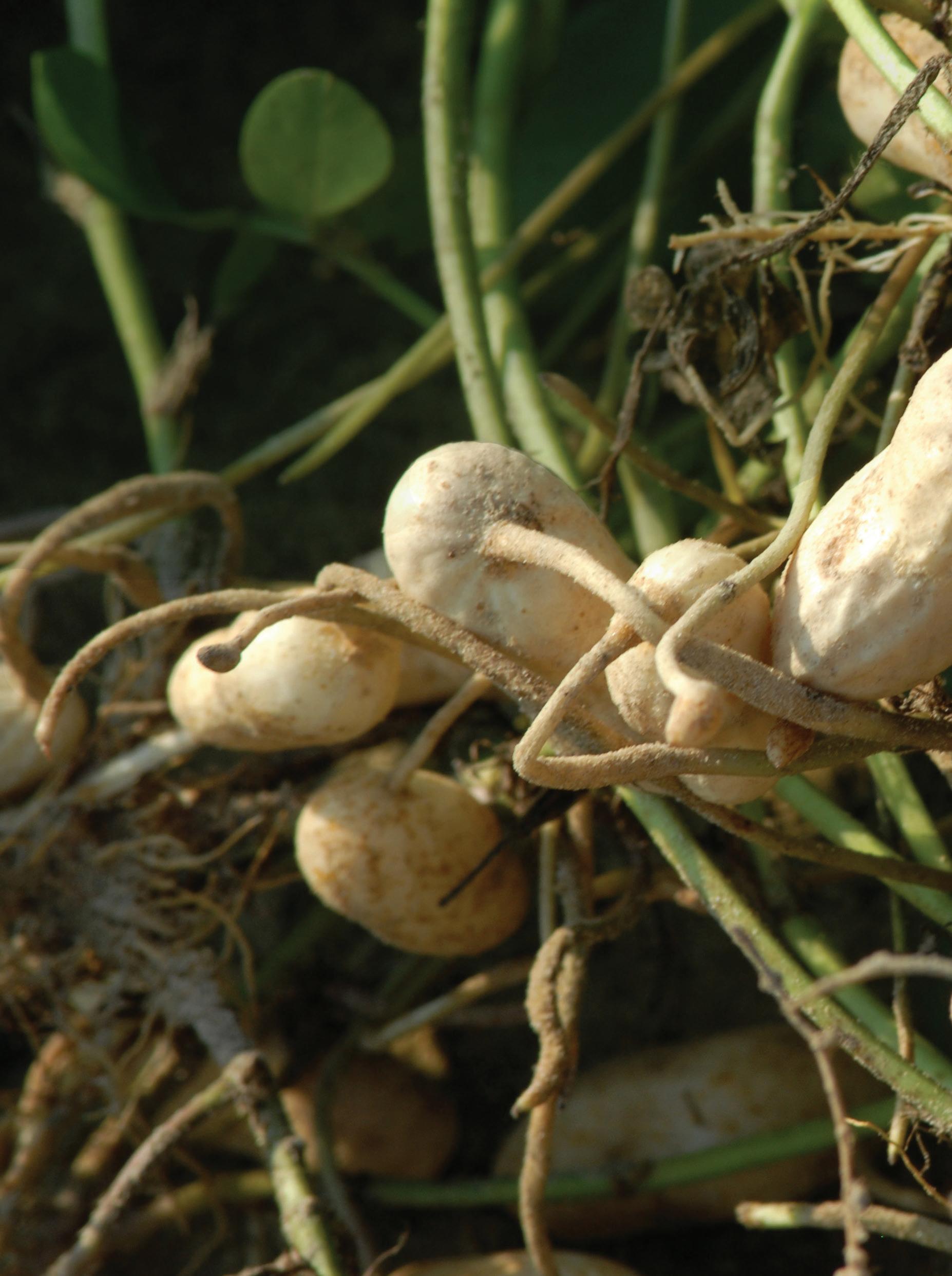
Find out more at PeanutResearch.org
 AMERICA’S PEANUT FARMERS
AMERICA’S PEANUT FARMERS
Departments
20 Peanunt Pointers Zone in on zinc levels.


Supplement
Features
10

Extended Economic Outlook
After two years of declines, peanut acreage is likely to increase in 2023 because of a lack of competing crops.
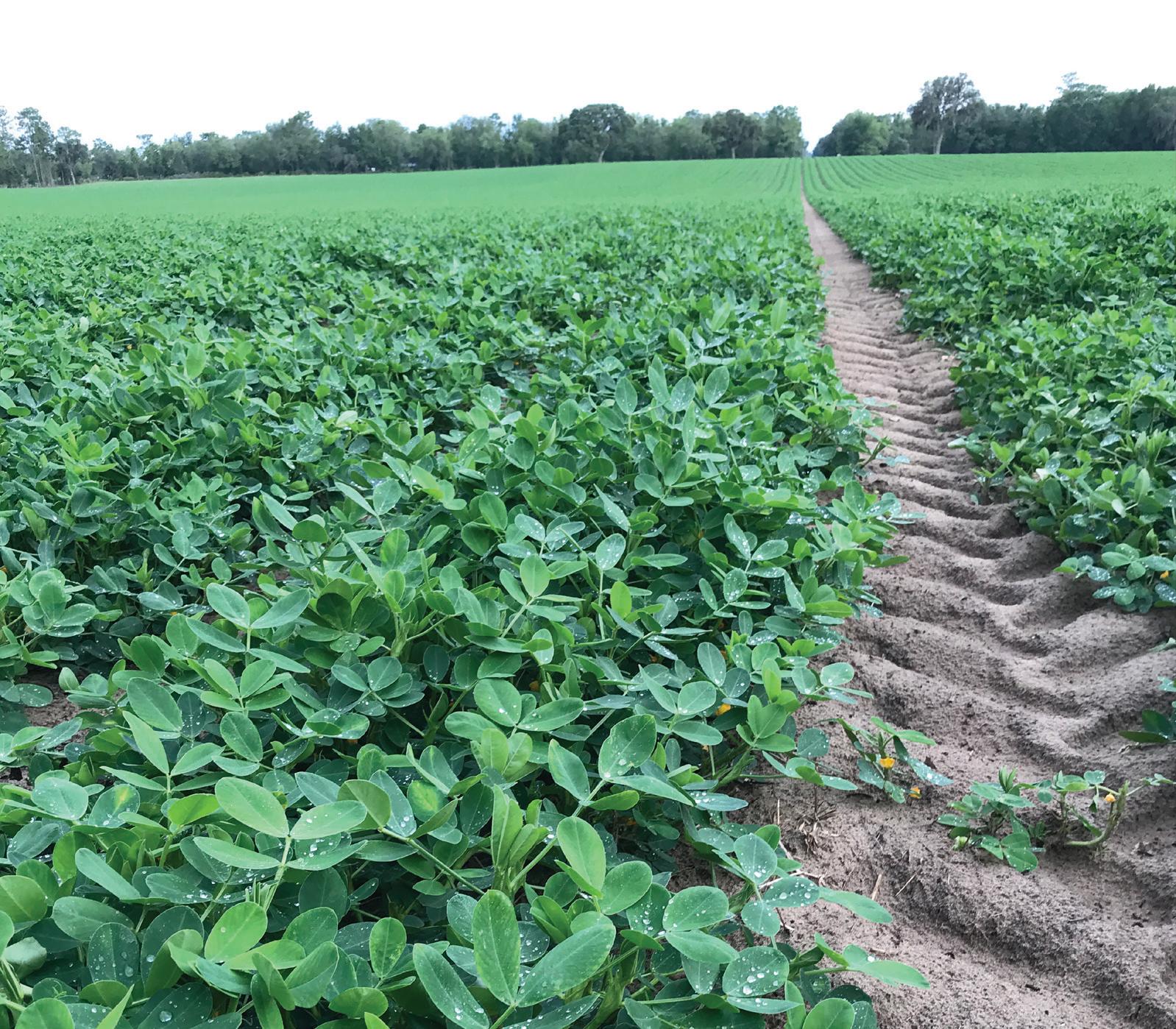
13 Thrips And TSWV



Knowing the relationship between the insect and disease is a start to controlling both.
16 Georgia Farmer of the Year: Bart Davis is producer uses precision ag techniques to increase efficiency in the field.
18 3
Pre-Plant Disease Management Tips





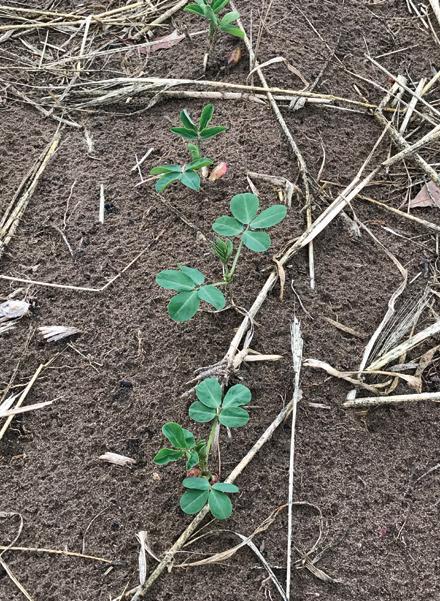

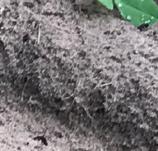
Based on Florida research trials, these tips can help producers effectively manage disease and nematodes.

Look for the Corn South supplement following page 12 in the Alabama, Florida, Georgia and Mississippi versions of e Peanut Grower.


MARCH 2023 • THE PEANUT GROWER / 3 TWITTER: @PEANUTGROWER
Editor’s Note
third year of La Niña
fool me again.
News Briefs More foreign market
funding proposed.
Market Watch
lackluster
Volume 35 • Number 3
10 4
A
won’t
5
access,
8
A
market continues.
THE PEANUT PRODUCER'SMARKETING & PRODUCTION MAGAZINE www.peanutgrower.com PEANUT GROWER The MARCH 2023 Extended Economic Outlook: Acreage Increase Expected Thrips and TSWV: Why The Relationship Matters 3 Pre-Plant Disease Management Tips
Cover photo by Amanda Huber
MARCH 2023
Management Practices ONE GROWER March 2023 Supplement to Cotton Farming and The Peanut Grower Magazines Southern Production & Marketing Strategies
EDITORIAL/PRODUCTION
Editor Amanda Huber ahuber@onegrower.com
Copy Editor Cassidy Nemec cnemec@onegrower.com
Art Director Ashley Kumpe
Digital Content Manager Katie Guthrie
ADMINISTRATION
Publisher/Vice President
Lia Guthrie (901) 497-3689 lguthrie@onegrower.com

Associate Publisher/Editor-In-Chief Carroll Smith (901) 326-4443

Associate Publisher/Sales Scott Emerson (386) 462-1532 semerson@onegrower.com
Audience Services
Kate Thomas (847) 559-7514
Production Manager David Boyd dboyd@onegrower.com
For subscription changes or change of address, call (847) 559-7578 or email peanutgrower@omeda.com
Scott Monfort
Extension Agronomist
University of Georgia
Dell Cotton
Peanut Growers Cooperative
Marketing Assn., Franklin, VA
Kris Balkcom
Agri-Program Associate
Auburn University
Dan Anco
Extension Peanut Specialist
Clemson University
Editor’s Note
I Won’t Be Fooled Again
At the Georgia Peanut Farm Show in January, the University of Georgia Peanut Team was recognized with the Georgia Peanut Commission’s Research and Education Award for their work in peanut breeding, pest pressure, soil fertility, precision technology and economics. The team was congratulated for their excellent ability to keep producers informed in all these various disciplines that affect peanut production and bring about greater efficiency.
This team works together cohesively, each bringing their various specialties and knowledge to the group. They are the embodiment of synergy and deserving of this award.
Emi Kimura
Extension Agronomist
Texas A&M University
David Jordan
Extension Agronomist
North Carolina State University
Glen Harris
Extension Agronomist

University of Georgia
Jason Ferrell
Extension Weed Specialist University of Florida
That said, if you have been around this group for long, you will also note that they like to engage often in good-natured ribbing of each other. One of their frequent targets of late is UGA plant pathologist Bob Kemerait’s use of weather maps and explanations of La Niña versus El Niño.
In the production information session at the Georgia Peanut Farm Show, Kemerait again started his slide show with weather maps and explained that we are facing a third year of La Niña. This likely means a warmer and drier winter and spring. He went on to explain more of what that meant for thrips pressure, which you can read starting on page 13.
I listened intently, taking notes for articles, but also making mental notes for myself. Like most every good Floridian, we have a pool. It’s just a small, round, above-ground, but it’s enough to let you escape the Florida heat for a quick dip.
The Peanut Grower (ISSN 1042-9379) is an agribusiness magazine for U.S. peanut producers. Published in eight monthly issues, January through July and November. Annual subscriptions are $40.00. Single Copy price is $5.00. Annual overseas subscriptions are $70.00, including Canada/Mexico. Periodicals postage paid at at Memphis, Tennessee, and at additional mailing o ices. Copyright © 2023 One Grower Publishing, LLC, all rights reserved except where otherwise noted. The Peanut Grower ® is a registered trademark, which reserves all rights granted by the U.S. Patent and Trademark O ice in association with the registration.
POSTMASTER: SEND ADDRESS CHANGES TO OMEDA COMMUNICATIONS, CUSTOMER SERVICE DEPARTMENT, P.O. BOX 1388, NORTHBROOK, IL 60065-1388. All statements, including product claims, are those of the person or organization making the statement or claim. The publisher does not adopt any such statement or claim as its own, and any such statement or claim does not necessarily reflect the opinion of the publisher. Printed in the USA.
One Grower Publishing, LLC, also publishes Cotton Farming, Rice Farming, Soybean South and Corn South

For the past couple years, February and March has been quite warm. Enough so that it had us looking at getting the pool uncovered and ready for swimming by late April or early May. Last year, we opened our pool too soon, and the weather turned. Late April and May were rainy and much cooler. The cloudy days and fresh rainwater kept me in constant turmoil over the pool. There’s nothing worse than fussing over a pool that it is still too cool to wade into but plenty warm to grow algae. My mental note was to not be fooled by the warm February and March and open the pool too soon.
So, chuckle at Dr. Kemerait’s forecasting if you will, but know that he’s probably spot on with his admonishments of weather-related issues to come in your peanut crop. For example, if it’s going to be a third year of early thrips pressure, what can you adjust to reduce the likelihood of Tomato Spotted Wilt Virus?
One Grower Publishing, LLC 875 W. Poplar Ave., Suite 23, Box 305 Collierville, TN 38017
4 / THE PEANUT GROWER • MARCH 2023 PEANUTGROWER.COM
Mike Lamensdorf PRESIDENT/TREASURER Lia Guthrie PUBLISHER/VICE PRESIDENT
EDITORIAL ADVISORY BOARD
ONE GROWER PUBLISHING, LLC
Amanda Huber Editor, e Peanut Grower
News Briefs
Farm Bill Hearing For Senate Ag
The Senate Agriculture Committee held its first Farm Bill hearing in the new Congress on Feb. 1, 2023, with newly sworn in USDA Under Secretary for Trade and Foreign Agricultural Affairs, Alexis Taylor, a key witness. Other witnesses were Jenny Moffitt, USDA Under Secretary for Marketing and Regulatory Programs, and Sarah Charles, Assistant to the Administrator for the U.S. Agency for International Development. The hearing covered USDA export promotion and U.S. food aid programs, both of which the American Peanut Council is involved with to benefit the U.S. peanut industry. USDA is providing $3.3 million in 2023 to APC for its export promotion programs. USAID purchased more than $100 million of RUTF/RUSF products in FY2022 and has committed to purchasing an additional $200 million in the coming years to help address growing malnutrition rates around the world.
While no peanut-specific issues were raised at the hearing, some senators expressed concern with the Administration’s lack of market access (i.e., tariff) negotiations. Taylor responded by highlighting USDA’s work to resolve non-tariff trade barriers and the importance of export market development programs. Taylor also noted that demand for export promotion funding outstrips available funds. Some senators also expressed concern on the use of cash for food aid purchases, rather than donation of U.S. commodities.
Legislation Seeks To Expand Export Programs
Bipartisan legislation has been introduced in the House and Senate proposing to double funding authorizations for USDA export promotion programs. Titled the Expanding Agricultural Exports Act of 2023, the bills (S.176 and H.R. 648), if enacted, would authorize an increase in funding for the Market Access Program from $200

million to $400 million annually, and for the Foreign Market Development Program from $34.5 million to $69 million annually.
The American Peanut Council is a cooperator with USDA, receiving export promotion funds from both programs.
Industry Mobilizes To Prevent Peanut Allergies rough WIC
The federal supplemental nutrition program for low-income persons, called Women, Infants and Children or WIC, serves 2 million babies each year. The WIC Food Package is undergoing an update, which only happens about every 10 years, to bring the package into alignment with the Dietary Guidelines for Americans. However, at least one critical piece is missing.
As proposed, the updated food packages do not encourage or support the early introduction of peanut-containing foods to prevent peanut allergies. This practice is solidly supported by science and recommended in the current Dietary Guidelines for Americans (and by the National Institute of Allergy and Infectious Diseases and the American Academy of Pediatrics). Given the number of babies WIC serves and the long period between package updates, decisions made now will impact possibly millions of families for years to come.
Industry and state organizations, rallied by the National Peanut Board, were asked to comment during the public comment period to try to right this wrong. The deadline for comments was February 21, and it is hoped that the agency will consider this input before issuing a final rule.
Four Farmers Named To National Peanut Board
Tom Vilsack, USDA Ag Secretary, recently appointed four members and four alternates to serve on the National Peanut Board. The appointees will serve three-year terms, from Jan. 1, 2023, to Dec. 31, 2025, with the
In Brief

• New Under Secretary for Trade expresses concern for market access.
• Funding for export promotions would double under new bill.
• USDA urged to use latest peanut allergy data in WIC packages.
• New NPB members appointed; new chairman from Virginia.
• Groups chip in to fix iconic Big Peanut.
• Georgia, Florida and Alabama hold trade shows, grower production meetings.
exceptions of the at-large appointees whose terms will begin immediately and end Dec. 31, 2024.
Greg Baltz of Pocahontas is the reappointed member from Arkansas. Allen Donner of Manila is the reappointed alternate from Arkansas.
Clay Deane of Sikeston is the reappointed member from Missouri. Russ Hoggard of Portageville is the reappointed alternate from Missouri.
Mark DeLeon of Erick is the new member from Oklahoma. Les Crall of Weatherford is the new alternate from Oklahoma. Crall previously served as a member and was NPB’s 2022 chairman.
Lucy Shackelford of Bonita, Louisiana, is the newly appointed at-large member. Shackelford previously served as at-large alternate. Clifford Neece of Portales, New Mexico, is the new at-large alternate.
The Board is comprised of 12 producer members and their alternates. Eleven members and alternates are from the primary peanut-producing states of Alabama, Arkansas, Florida, Georgia, Mississippi, Missouri, North Carolina, Oklahoma, South Carolina, Texas and Virginia. An at-large member and alternate represent the minor peanut producing states.
MARCH 2023 • THE PEANUT GROWER / 5 TWITTER: @PEANUTGROWER
News Briefs

Grower Paul Rogers Elected NPB Chairman
Paul Rogers of Wakefield, Virginia, was elected the 2023 National Peanut Board chairman this past December. Rogers serves as active chairman from January 2023 until December 2023.

Rogers’ tenure has included roles as vice chairman, treasurer and secretary.
“I am excited to continue to take our production and allergy research to higher levels in efforts to provide stability and profitability to the American peanut farmer, as well as provide a sustainable and nutritious food to feed the world,” Rogers says. “I also take the matter of replacing our current CEO Bob Parker very seriously and look forward to working closely with the search committee and Vetted Solutions to find the right successor for Bob.”
Rogers graduated from Old Dominion University with a Bachelor
of Science in civil engineering technology and has been farming since graduating in 1997. Rogers is a member of several agricultural organizations including the Virginia Crop Improvement Association, Virginia Cotton Growers Association, Virginia Farm Bureau Cotton Advisory Board and Virginia Cotton Board. Rogers currently serves as a board member for Colonial Farm Credit, and as past chair and current director of local Southern States Petroleum Co-op.
Rogers and his wife, Dawn, have three children, Lauren, Jake and Cade.
Rebuilding Iconic Peanut Monument In Georgia
AgGeorgia Farm Credit has donated the final $10,000 needed to rebuild the big peanut monument that was destroyed by Hurricane Michael in 2018. This donation, along with funds from the Ashburn Turner County Chamber of Commerce, the Turner County Young Farmers and the Georgia Department of Agriculture

Alabama-Florida Peanut Trade Show
Peanut growers from Alabama and Florida were able to fine-tune their farming operations with information gained at the Alabama-Florida Peanut Trade Show Feb. 2, 2023, at the National Peanut Festival fairgrounds in Dothan, Alabama. The trade show was hosted by Alabama Peanut Producers Association and Florida Peanut Producers Association, and sponsored by National Peanut Board.
More than 400 peanut growers and industry partners from Alabama and Florida attended to view industry products and services offered by more than 70 exhibitors.

Researchers from Auburn University and the University of Florida were on hand to showcase the peanut research they are working on with the support of grower check-off dollars. Growers could talk to the researchers one on one about the research projects.
During the lunch program, attendees received an update from the National Peanut Board by Bob Parker. Bob Redding of the Redding Firm gave a legislative update, and Dr. Marshall Lamb, from the National Peanut Research Lab, spoke to growers about the 2023 peanut market outlook.
will ensure that the monument will be restored to its prominent location along Interstate 75.
Ashley Miller, Turner County Chamber of Commerce executive director, says, “The Big Peanut monument is a tribute to all South Georgia’s farmers and agricultural industries that are the backbone of our economy. We are proud that Turner County is home to this testament, and we are working hard to get it back up, repaired and restored to all its former glory.”
Several door prizes were given out throughout the morning of the trade show, but the prizes everyone was most looking forward to winning were announced at lunch.
The Grand Door Prize, provided by Kelley Manufacturing Co., of a $5,000 voucher that can be used toward $5,000 off the price of any one piece of equipment or for $5,000 worth of parts for KMC equipment, was won by Mark Nolin of Graceville, Florida.
Thomas Kirkland of Headland, Alabama, won a free trip to the 2023 Southern Peanut Growers Conference in July. Andy Robinson of Williston, Florida, won a Benelli 12-gauge shotgun.

6 / THE PEANUT GROWER • MARCH 2023 PEANUTGROWER.COM
Paul Rogers
News Briefs

Georgia Peanut Farm Show Honors Farmers And Key Leaders
The 46th annual Georgia Peanut Farm Show and Conference was held at the University of Georgia Tifton Campus Conference Center in Tifton, Georgia, in January and attracted more than 1,000 peanut farmers. The show was sponsored by the Georgia Peanut Commission.

The GPC installed the seventh recipient into the Georgia Peanut Hall of Fame by inducting Sonny Perdue, chancellor of the University System of Georgia. A portrait of Perdue will be displayed at the GPC headquarters in Tifton, Ga. Prior to becoming chancellor, Perdue was the 31st Secretary of the U.S. Department of Agriculture from 2017 to 2021. He also served two terms as the governor of Georgia, from 2003 to 2011, and was a member of the Georgia Senate from 1991 to 2001, where he chaired the Senate Higher Education Committee and eventually became Senate President Pro Tem.
The GPC presented awards to individuals and businesses for their service to the peanut industry and promotion of peanuts across the United States. The award recipients include Distinguished Service Award – Gary Black, former Georgia Agriculture Commissioner; Research and Education Award – Calvin Perry, retired superintendent of the University of Georgia’s C.M. Stripling Irrigation Research Park; the University of Georgia Peanut Team; Innovator Award – William D. Branch, peanut breeder at the University of Georgia; Promotion Award – Bob Parker, president of the National Peanut Board; Media Award – Peanut Farm Market News; and the Georgia Peanut
Special Award – Darlene Cowart, vice president of Food Safety and Quality with Birdsong Peanuts.
The Outstanding Georgia Young Peanut Farmer Award, sponsored by the GPC and BASF, was presented to Adam Curles of Camilla, Georgia.
The GPC and Agri Supply presented the Outstanding Georgia Peanut Farmers of the Year Award to farmers in five districts. Winners include District 1 – St. Elmo Harrison, Whigham; District 2 – Armond Morris, Tifton; District 3 – Lamar Black, Millen; District 4 – Barry Martin, Hawkinsville; and District 5 – Jack Miller, Leslie. These farmers received a sign to display at their farm and gift cards from Agri Supply and the Georgia Peanut Commission.

The presentation of the Grand Door Prize donated by Kelley Manufacturing Co. was presented to Cole Godowns of Louisville, Georgia. Godowns received one season’s use of a new KMC peanut combine and the option of purchasing the combine from a KMC dealer with $15,000 off the list price at the end of the 2023 season, as well as a cash prize.
Amadas Industries provided the Grower Door Prize to Austin Griffin of Ocilla, Georgia, and Gary Paulk of Wray, Georgia. Griffin received a customized Grizzly cooler and a certificate toward the purchase of a new Amadas self-propelled peanut combine, pull-type peanut combine, peanut digger or peanut dump cart. Paulk received a customized Grizzly cooler and a certificate for Amadas parts.
MARCH 2023 • THE PEANUT GROWER / 7 TWITTER: @PEANUTGROWER
Market Watch


Buyers Are Covered For Now, Leading To A Lackluster Market
The peanut market is and has been quiet for months. Manufacturers are not interested in 60 centsper-pound peanuts and know that the industry has a good quality crop in warehouses, plus a 1-million-ton carryout. There seems to be downward pressure on the shelled market but not enough interest to move the market.
Meanwhile, the peanut producer is faced with increased costs and inflation. Thus far, growers have been unwilling to negotiate and are still studying their options. One official says, “all eyes are on cotton and China.”
There is little discussion about the price of farmer-stock contracts, and time is passing. With the shelled market stalled, manufacturers seek to find prices more along the low 50 cents per pound. Brokers and others describe the market as “dull.” It’s obvious contracting will not begin until shellers get some signals from manufacturers they are willing to buy that level.
Watching Cotton
The highest daily spot price for cotton in 2022 was May 4 at $1.50 per pound. The lowest was Oct. 31 at 72 cents. Cotton acreage and production will decline in 2023 because of lower price expectations compared to competing crops. An optimistic futures price in 2023 is 80 to 85 cents per pound. Conversely, a pessimistic price is 69 to 75 cents per pound. For planning and budget projections, Extension economists suggest a price of 72 to 78 cents.
Supply
The supply of peanuts was reduced by 2 million pounds last month to 5.57 billion pounds. A yield reduction for Georgia and Alabama and a reduction

in harvested area for Texas account for most of the decline. Reduced U.S. peanut production in 2022, resulting from fewer harvested acres and a lower peanut yield of 4,019 pounds per acre, trims the estimated total peanut supply by 203 million pounds, a 2.5% reduction. It still leaves 1.1 million tons as ending stocks and is a market depressor.
The Price Loss Coverage program will not have an impact on the farmer’s plans and could be $5 per ton next October. One sheller recently announced a payout of $22 per ton above contracts and other premiums for seed or irrigation. A new ReGeneration cover crop program may net the famer another $10 per acre. The U.S. Department of Agriculture is initiating new programs for climate-friendly management on the farm.
Exports
U.S. peanut exports are reduced by 100 million pounds to 1.1 billion. Carryout is forecast to remain at 2.18 billion pounds, below the 2021/22 carryout of 2.36 billion pounds.
J. Tyron Spearman Contributing Editor, e Peanut Grower
China has reduced peanut purchases by 39% compared to 2021 (JanuaryOctober). However, the country has still bought more than 68,000 metric tons of kernels and processed product. Although China is the biggest food importer in the world, they are entering a population crash after 40 years a self-imposed onechild policy. Some reports indicate the population could dwindle from the current 1.4 billion to 1.0 billion by 2050.
Mexico and Canada have purchased more than 56% of the exports with the Netherlands and Japan ranking fourth and fifth, respectively.
Trade Help Needed
Peanut leaders have written the U.S. Undersecretary of Trade and the Chief Ag Negotiator to bring to their attention non-tariff trade barriers of imports from the United States into the European Union, which are being unreasonably targeted for aflatoxin. Fair testing protocols would increase U.S. exports.
The American Peanut Council was approved for $2.4 million for Market
8 / THE PEANUT GROWER • MARCH 2023 PEANUTGROWER.COM
Leading Marketing Indicators (As of Feb. 3, 2023) 2022 Est. Acreage (-10.1%) ............................................. 1,411,000 acres 2022 Est. Production (-12.5%) ........................................... 2,784,000 tons 2022 Market Loan 2021-2022 ............................................ 2,568,453 tons 2021-22 In Loan (1-10-23) ......................................................... SOLD OUT 2022-23 In Loan (1-03-23) .................................................. 2,037,206 tons 2022-23 Domestic Usage (5 Mo.) ..................................... DOWN – 3.0 % 2022 Exports (10 Mo.) ...................................................... DOWN – 6.32 % NATIONAL POSTED PRICE (per ton) Runners - $424.68; Spanish - $413.41; Valencia and Virginias - $428.31
Market Watch

Access Program funding projects and $470,000 for Foreign Market Development programs to promote peanuts and peanut products in selected markets in 2023. A group of Congressional leaders have introduced a bill to double the export promotion programs next year.
Argentina has suffered from lack of rain and heat during the early part of the growing season. Estimated planted area is about 375,000 hectares, a 10% to 12% reduction from last year. Rains are needed in February and March. If this happens, Argentina expects a decent crop.
Quiet Markets
Overall, the peanut market summary is the same as last month. The market is quiet as buyers have good coverage and are not wanting to buy into the market at the prices it would take to find a willing seller.
Year To Date Exports
U.S. peanut exports through October increased 2% by value but decreased 6% by volume as compared to the same period in 2021. Total exports reached 404,850 metric tons, valued at $601 million.
Shipments To Japan And Europe Grow, UK Declines

Shipments to Mexico remain strong, increasing 14% by value and 7% by volume to reach $176 million and 123,414 MT. Exports to Canada are also up for the year-to-date, rising 6% by value and 3% by volume to $172 million and 106,061 MT. Exports to China decreased 30% by value to $69 million and 38% by volume to 72,668 MT. Shipments to Europe, excluding the United Kingdom, increased 12% by value and 10% by volume to reach $64 million and 44,992 MT, while shipments to the UK decreased 3% by value to $21 million and 13% by volume to 13,270 MT. Exports to Japan increased 18% by value and 28% by volume to reach $33 million and 18,616 MT, respectively. Finally, exports to the rest of the world rose 4% by value to $67 million but decreased 1% by volume to 25,379 MT.


By Product Type: PB And Processed Peanuts On Upward Trend
The U.S. exported 154,274 MT of raw kernels valued at $204 million through October, down 27% by value and 34% by volume as compared to the previous year. Shipments
of inshell peanuts (including farmer stock) totaled $120 million and 111,169 MT, up 3% by value but down 11% by volume year-over-year. Blanched peanut exports increased 213% by value and 354% by volume to reach $82 million and 64,636 MT. Peanut butter shipments have also increased, rising 7% by value and 5% by volume to $119 million and 37,029 MT. Finally, exports of processed peanuts totaled $55 million and 21,318 MT, up 32% by value and 37% by volume.
For more information on year-to-date U.S. peanut exports, visit PeanutsUSA.com
Source: American Peanut Council
MARCH 2023 • THE PEANUT GROWER / 9 TWITTER: @PEANUTGROWER
Extended Economic Outlook
After two years of declines, peanut acreage is likely to increase in 2023 because of a lack of competing crops.
By Amanda Huber
Given the topsy-turvy nature of the general economy, the predictability of row-crop markets is almost a welcome sight. In 2022, peanut acreage and production decreased because cotton prices were high. In 2023, the script will flip, and peanut acreage will be increased again because cotton will be on a down swing.
Nationwide, peanut acreage was down about 8% in 2022 versus 2021, says Peanut Growers Cooperative Marketing Association manager Dell Cotton.
“Peanut acreage declined about 10% in the Southeast in 2022. Drought in the Southwest led to a 27% reduction. The Virginia-Carolinas was the only production area showing a
slight increase of about 4%.”
Most of the increase in the V-C was in North and South Carolina, he says.
“As for yields, six states averaged more than 4,000 pounds per acre, which is pretty much the standard benchmark now,” Cotton says. “Farmers have become much more efficient, and yields show that.”
As expected with a decrease in acreage, total U.S. production was down about 10%.
“Production for the Southeast was down 9%, the Southwest declined 27% and the V-C area stayed about the same as far as production,” Cotton says. “Of the total crop, 83% were runner
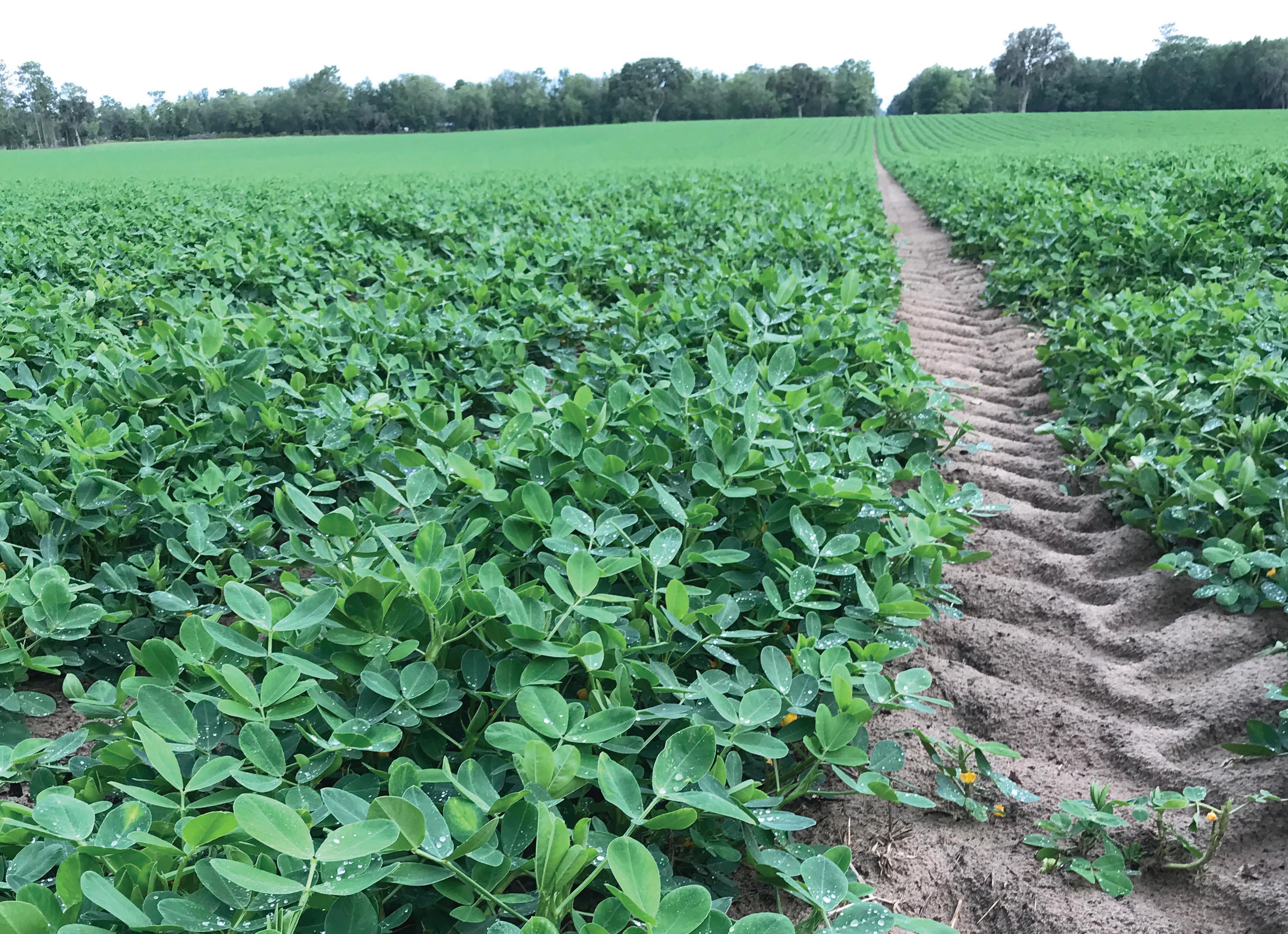
PEANUTGROWER.COM
type, 14% Virginias, 2% Spanish and 1% Valencias.”
Good Yields, Superb Quality
Despite a reduction in acreage and production, yields of the 2022 crop are estimated to be relatively good.
University of Georgia Department of Agricultural and Applied Economics senior public service associate Amanda Smith says the U.S. Department of Agriculture National Agricultural Statistics Service forecasted 2022 yields at 4,090 pounds per acre for the U.S. and 4,400 pounds per acre for Georgia, down 1% from 2021.
“If realized, this would be the fourth-highest average Georgia yield on record and third-highest average U.S. yield,” Smith says. Quality was also outstanding. “As determined by the USDA Federal State Inspection Service, quality of the 2022–2023 crop looks good with 99.8% of the crop grading Seg. 1, the highest quality grade segment,” Smith says.
Factors For The Acreage Decline
A decrease in acreage for the 2022 crop was not unexpected as there were several factors bringing about this result.
“The oversupply of the 2021 crop led to a lack of contracts and a reduction in acres in 2022,” Smith says. “The 2021–2022 crop was the third-highest peanut crop on record, and supply was expected to exceed consumption by 140,000 tons, resulting in an ample carryover of more than 1.18 million tons. Furthermore, the quality of the 2021–2022 crop was high, and there was no rush to ‘buy’ peanut acres in 2022 with early forwarding contracts.”
Peanuts are likely to look more favorable in 2023 because of lower relative-price expectations with competing crops.
“Prices for cotton, a crop that competes for acres with pea-
Looking Ahead:
• Peanut acreage will increase after a two-year decline, but increased prices are not expected because of market coverage.
• U.S. cotton acreage and production to decline because of lower prices and lack of demand.
• Total food use for peanuts is forecast at 1.69 million tons, up 2.1% and a possible record.
• A recession in the U.S. economy is likely inevitable because of inflation, energy costs.
nuts, hit record highs during early 2022, leading to a shift in planted acres away from peanuts into cotton.
“Georgia farmers planted 685,000 acres of peanuts in 2022, down 9.3% from the 2021 crop,” Smith says of the second year in a row of acreage decline in Georgia and nationally.”

Looking To 2023
Again, looking at cotton for signals about the peanut crop, Smith says a reduction in consumer demand for cotton-related products will suppress cotton prices in 2023. “With a lower profit margin and higher input costs, U.S. cotton acreage and production will likely decline.”
This, combined with the two-year decline in planted acres, means that peanut acres will likely increase in 2023.
“Carryover is expected to be around 1 million tons of quality peanuts,” Smith says. “The competition for acres with cotton is also expected down. Continued high fertilizer prices and significantly lower expected cotton prices may push farmers into planting peanuts.
“Given all of these factors, it is not unreasonable to expect
MARCH 2023 • THE PEANUT GROWER / 11 TWITTER: @PEANUTGROWER
lower-priced forward contracts than we saw in 2022. Season average prices ranging between $450 to $500 per ton are sensible planning expectations for Georgia growers in 2023.”


The good news is that Smith says peanut disappearance of the 2022–2023 crop is projected to remain strong at 3 million tons, which is supported by forecasted increases in food use and exports over last year.




Total Food-Use Record Possible
Peanut consumption increased during the pandemic and continues to be positive, although growth has slowed in some categories.
“Use of all shelled grades increased from 2.379 billion pounds to 2.460 billion pounds in 2021 but decreased slightly to 2.445 billion pounds in 2022,” says North Carolina State University Extension economist Blake Brown. “The increase in use during the pandemic was attributed mainly to increased peanut butter use. In-shell use rose from 141 million pounds to 144 million pounds in 2021 but declined to 130 million pounds in 2022.”
Smith says, “Demand for edible peanuts remains high with recent estimates of consumption at 7.9 pounds per capita. For the 2021–2022 marketing year, there was an increase in peanuts used in candy, up 13.1%, followed by a decrease in snack peanuts, down 4.0%, and peanut butter, down 2.7%.
“So far in the 2022–2023 marketing year, peanuts used in candy and snacks are down, but peanut butter use is up. Total food use for the 2022–2023 marketing year is forecast at a record 1.69 million tons. If realized, that would be an increase of 2.1% from 2021–2022,” she says.
Recession Predicted
The export market remains slightly positive, but good quality, edible product takes longer to move into the market.
Smith says, “Exports are projected up 1.5% to 600,000 tons. Crush is forecast to be down to 403,000 tons, a decrease of 4.2% from 2021–2022. These all combine to an expected total peanut disappearance of 3.07 million tons for the 2022–2023 marketing year, potentially the second-highest consumption on record.”
Overall, the U.S. economy is on course for a recession caused by high inflation.
Economic Growth, UGA Terry College of Business, predicts the 2023 recession will last about six months, which is relatively short.
“A 2023 recession is not inevitable, but it would take near-perfect monetary policy plus a lucky break to avoid one,” he says. “I put the probability of recession at 75%. It will be extremely difficult for the Federal Reserve to cool down the economy enough to contain the highest inflation in 40 years without triggering a recession.”
Will a recession have consumers turning back to peanut butter on par with pandemic levels? That remains to be seen. PG
PEANUTGROWER.COM
Thrips And TSWV
By Amanda Huber
Since Tomato Spotted Wilt Virus has been a problem in fields, it has always fluctuated in severity, says University of Georgia research plant pathologist Albert Culbreath. In 2022, losses to the virus across the Southeastern United States were estimated to be 7% and had a significant impact on a majority of acres planted to peanuts in the region.
“In my own plots and in grower fields I saw or was in, there was a lot of spotted wilt. It really took me back to 1997,” Culbreath says.
Although researchers and Extension do not have a definitive answer for the increase in TSWV, they do know pressure has been on the rise.
Why Thrips Matter:
• Thrips will be present in every field every year.
“The varietal resistance we have has never been a complete level of resistance as in approaching immunity,” Culbreath says.
• Thrips feeding injury reduces yield.
• Thrips transmit Tomato Spotted Wilt Virus.
“The resistance we have in our varieties has not been overcome, but it can be overwhelmed,” he says. “The resistance is still viable and there have not been any genetic changes in the virus or varieties, but the amount of inoculum that our varieties have been exposed to has led to greater losses.
“As bad as spotted wilt was in spots in 2022 with our resistant varieties,” Culbreath says, “I shudder to think of what it might look like if we were still dependent on varieties like Florunner or SunOleic 97R, which were susceptible to the virus.”
Thrips Must Catch The Virus To Spread It
To understand TSWV, it is necessary to understand the role of thrips.
“Thrips matter, and I want you to understand why thrips matter,” says UGA Extension entomologist Mark Abney. “Thrips have to acquire the virus by feeding on an infected plant in the larval stage to be able to transmit it to another plant, such as peanut.”

However, thrips are basically everywhere, he says. They can come from your neighbor’s field or the next state – pretty much anywhere.
“Thrips are 1- to 2-millimeter-long insects. There are two species we see in peanuts: tobacco and western flower thrips. But, it is mostly tobacco thrips that come out of the ground
and get onto our seedling peanuts, that cause damage you see on seedlings and are responsible for most of the TSWV that causes yield loss.”
What do thrips eat?
“Almost anything green,” Abney says. “They have a very wide host range and can complete their life cycle in two to three weeks.”
Watching The Weather
We can do a pretty good job predicting intensity and timing
MARCH 2023 • THE PEANUT GROWER / 13 TWITTER: @PEANUTGROWER
Thrips can be found in every field every year according to UGA Extension entomologist Mark Abney. “A lot of times, I can go into a field and find thrips the very first day the first green leaf comes out of the ground.”
Knowing the relationship between the insect and disease is a start to controlling both.
of thrips dispersal. Why? Those are regulated by weather, Abney says.
“Warm winters generally mean more thrips. But rainfall kills immature thrips. If we have warm weather but lots of rain in February and March, we may have fewer thrips. The best-case scenario is cold and wet.
University of Georgia plant pathologist Bob Kemerait says we are in for a third year of a La Niña weather pattern. A La Niña refers to the cooling of ocean surface temperatures in the Pacific Ocean. What it means for the Southeastern United States is warmer temperatures and reduced rainfall.
“Three consecutive winters of La Niña, which is characterized by warmer and drier than normal,” Kemerait says. “It doesn’t mean it will never get cold, nor that it’s not going to rain. It just means above-average temperatures and below-average rainfall.”
Warmer temperatures and less rainfall mean more thrips.
“If La Niña trends continue, and it’s warmer and drier, that will increase the risk of thrips populations. In La Niña winters, we tend to see more TSWV, and we’re in a run of three in a row.”
Don’t Make The Problem Worse
With a wide range of hosts, Abney says thrips will overwinter in anything green. So, what triggers their move into peanuts? He offers the following example.
To Reduce Thrips
“It’s April and temperatures are in the 60s, then all of a sudden the temperature shoots up into the 80s for four or five days in a row. Winter annual weeds start to die back. Thrips don’t give up and die. They fly to whatever tender green plant they can find, which is often seedling cotton or peanuts.
“Knowing thrips flights is more important for cotton than peanut, but we can predict the intensity of thrips and TSWV. If you don’t protect your peanuts from TSWV, you are more likely to get it.”
Abney says you can control thrips, but you can’t kill enough to keep them from being a problem or infecting your field. And, you can also make the situation worse.
“If you plant peanut on May 1, then in a few days burn down a nearby field, where are those thrips going to go as those plants die and turn brown? They will move onto green peanut seedlings. So, you can make problems worse.”
What can you do in this case? Abney says an option is to add Orthene to the burn down.
“A lot of times, I can go into a field and find thrips the very first day the first green leaf comes out of the ground,” he says. “They are always out there.”
Always Meeting The Threshold
On their own, Abney says, thrips will suck the juice from your seedling plants, causing some yield loss. Because of this, a threshold was developed. If you scout peanuts 14 days after planting and find two or more thrips per plant, you need to treat. But Abney says you’ll meet threshold nearly every single time. So, what does he recommend?
“Because most every field would meet a threshold of two or more thrips at 14 days after planting, I recommend you
The Effect of Peanut Rx Factors On Thrips:
put an insecticide at plant to kill thrips. If TSWV went away tomorrow, I would tell you to control thrips because you will preserve yield and save money in the end,” he says.
But the biggest part of the story is TSWV. Going into 2023, Abney says there are no new treatments for thrips or spotted wilt. However, just because there is nothing new, does not mean there’s nothing you can do.
“TSWV has been around nearly 40 years and bad for the past 30 years. Those things we figured out in 1996 still work. It doesn’t work perfectly – nothing does. But it can help.”
Critical Factors Affecting Thrips
Those “things” figured out in 1996, as Abney refers to, are the basis of Peanut Rx. Although the risk index is about TSWV, plus white mold and leaf spot, it covers a lot of factors that influence thrips, the vector of the virus.
Peanut Rx starts with plant population, but the affect on thrips is unknown, Abney says. However, it is well known that there will be more virus with skippy stands.
“The way I look at plant population, if I have a million thrips in the air and 500,000 plants, those thrips land, and I have two thrips per plant. But, if I have a million thrips and a million plants, and the thrips land, then I have one thrip per plant. I would rather have one thrip per plant than two.”
Since at-plant insecticide is recommended, it has a major impact on thrips. Row pattern only affects the way thrips find their host; otherwise, it has an unknown impact.
Planting date and tillage both have a significant impact on thrips pressure, Abney says.
“How do thrips find their host? They look for the green plant on bare ground. They don’t tend to land on a green plant with residue around it. It’s not their preferred host. Tillage matters,” Abney says. The last Peanut Rx factor, Classic herbicide, has no effect on thrips.
Thrips Matter, As Does The At-Plant Insecticide
Using an at-plant insecticide has a major effect on thrips pressure. In grower surveys conducted by UGA Extension agents, Abney says they found that nearly 80% of acres were treated with an at-plant insecticide.
“That’s good, but it tells me that 20% of acres are at increased risk of losses from TSWV,” he says.
Often, there are options of pesticides that can be used nearly interchangeably. In the case of reducing TSWV pressure, one product stands alone: Thimet.
14 / THE PEANUT GROWER • MARCH 2023 PEANUTGROWER.COM
Peanut Variety Minimal Impact Planting Date Major Impact Plant Population Unknown At-plant Insecticide Major Impact Row Pattern Unknown Tillage Major Impact Classic Herbicide No Impact
Pressure:
1. Use a resistant variety.
2. Plant in the low-risk window.
3. Use Thimet in-furrow at planting.
“What should you use in-furrow?
Fifty percent of those 80% using an at-plant insecticide use Thimet,” Abney says. “Thimet does two things: it kills thrips, and it reduces the risk of TSWV.”
Another insecticide used is imidacloprid.

Abney says this product reduces the risk of loss due to thrips feedings. However, it does not reduce any risk of loss due to TSWV, and, in fact, it can increase the risk of TSWV.
“It says this directly on the label. It doesn’t always make it worse, but it can,” he says.
Another product is AgLogic.
Abney says, “AgLogic is actually the best thrips-killing product available, but it doesn’t reduce the risk of TSWV. It’s not just about killing thrips. Sometimes you’ll see a reduction in spotted wilt, but not much.”
Final Recommendation
What does Thimet do?
“It induces host defense response to the virus,” Abney says. In other words, it turns on the plant’s immune system.
“When you take a variety that has some resistance, like Georgia 06-G and you put Thimet under it, you give that plant more resistance. Do we make it immune? No. We can’t expect it to be immune. But we make it more resistant,” he says.
Other insecticides don’t do this.
In a survey of fields by UGA Extension agents, Abney says that in fields using Thimet, 9% TSWV was found. In those using imidacloprid, 19% TSWV was found. The rule of thumb for losses is 20 pounds for every 1% TSWV infection.
In 2023, Abney says producers should plant a resistant variety in the low-risk window, which is May 11 to May 31, and apply Thimet in-furrow to reduce thrips pressure and the risk of TSWV. PG


MARCH 2023 • THE PEANUT GROWER / 15
This picture of Tomato Spotted Wilt was taken in Colquitt County in a field of Georgia-06G peanuts that were planted late April and imidicloprid was used in-furrow.
This picture by UGA plant pathologist Bob Kemerait shows “Thimet burn,” injury that results when the insecticide is used in-furrow on peanuts. The yellowing and small spots along the edges of the leaves are cosmetic injury that is also proof the product is in the plant and doing its job.
Georgia Farmer of the Year: Bart Davis
This peanut, cotton and corn producer, plus cattle operator, uses precision ag techniques to increase efficiency in the field.
Bart Davis doesn’t seek out accolades or praise, but through an impressive dedication to his farm and the industry, honor found him at this year’s Georgia Ag Forecast presentation, where he was recognized as 2023 Georgia Farmer of the Year.
University of Georgia College of Agricultural and Environmental Sciences Dean Nick Place awarded Davis at the annual outlook event Jan. 27 on the UGA Tifton campus.
“It’s a great honor to be nominated as Georgia’s farmer of the year. I’m not one that’s ever been real big on recognition. I’m sure there’s farmers out there that deserve it more than I do,” Davis told Southeast Ag Net. “But me and my family are honored by it.”
Strength Through Adversity
Davis began farming 41 years ago in Doerun, Georgia, following the loss of his mother and father during his senior year of high school. Since then, he has grown the then-500-acre operation to encompass 5,000 acres. Today, he focuses on cotton, peanuts and corn, while also managing a cattle operation.
“Farming’s been my life. As a child, that’s all I ever wanted to do is farm and farm for my father,” says Davis. “Of course, I lost him about the time I was graduating. I have got to farm, got married early in life. Me and my wife together have built a farm — a row crop farm and cattle operation. We’ve got three kids that are really involved. It’s just an honor to do every day what you love to do.”
Precision Ag And Wildlife Stewardship Recognition
Davis has made impressive strides in using precision agriculture technology to ensure the efficiency of his farm, including the use of soil moisture sensors and irrigation in the majority of his fields. Because of his work with precision agriculture and wildlife stewardship, Davis was recognized as Quail Forever and Pheasants Forever’s Precision Farmer of the Year in 2021.
In addition to the work on his own farm, Davis has given back in various industry leadership roles. He has served on the Georgia Cotton Commission Board for the past 10 years and is the current chairman. He also
Bart Davis, Davis Family Farms:
• Farming 41 years in Doerun, Georgia.
• Grew a 500-acre operation into 5,000 acres.
• Focuses on cotton, peanuts and corn, while also managing a cattle operation.
• Uses precision ag technology, such as soil moisture sensors, to ensure efficiency.
• Current chairman of the Georgia Cotton Commission.
• Named 2023 Georgia Farmer of the Year and will compete for the Swisher/Sunbelt Ag Expo Southeastern Farmer of the Year.
serves as chairman of the Georgia Boll Weevil Eradication Foundation. Nationally, he serves as a voting delegate to the National Cotton Council and represents Georgia at Southern Cotton Growers and Cotton Incorporated.
Planning Is Key
His outlook and advice to other farmers for the next year is to adjust operations for inflation and increased costs. He’s hoping for prices and input costs to decrease, but in the meantime, planning is key.
“We’ve got to hope for the best going into this crop and try to figure out which crops will fit you better for your cash flow and your budget this year,” he says.
In the next year, Davis will serve as a representative of Georgia, further showcasing his commitment to industry leadership, environmental stewardship, marketing innovation and the adoption of cutting-edge technologies. He will also represent Georgia as the state nominee for the Swisher/Sunbelt Ag Expo Southeastern Farmer of the Year.
“The recognition of the Georgia Farmer of the Year allows us the opportunity to celebrate the ‘cream of the crop’ in Georgia agriculture,” says Mark McCann, assistant dean for University of Georgia Cooperative Extension. “These farmers are innovators, early adopters and entrepreneurs who are both lifelong learners and environmental stewards.”
Article by Amanda Budd, University of Georgia College of Agricultural and Environmental Sciences.
16 / THE PEANUT GROWER • MARCH 2023 PEANUTGROWER.COM
PEANUTGROWER.COM
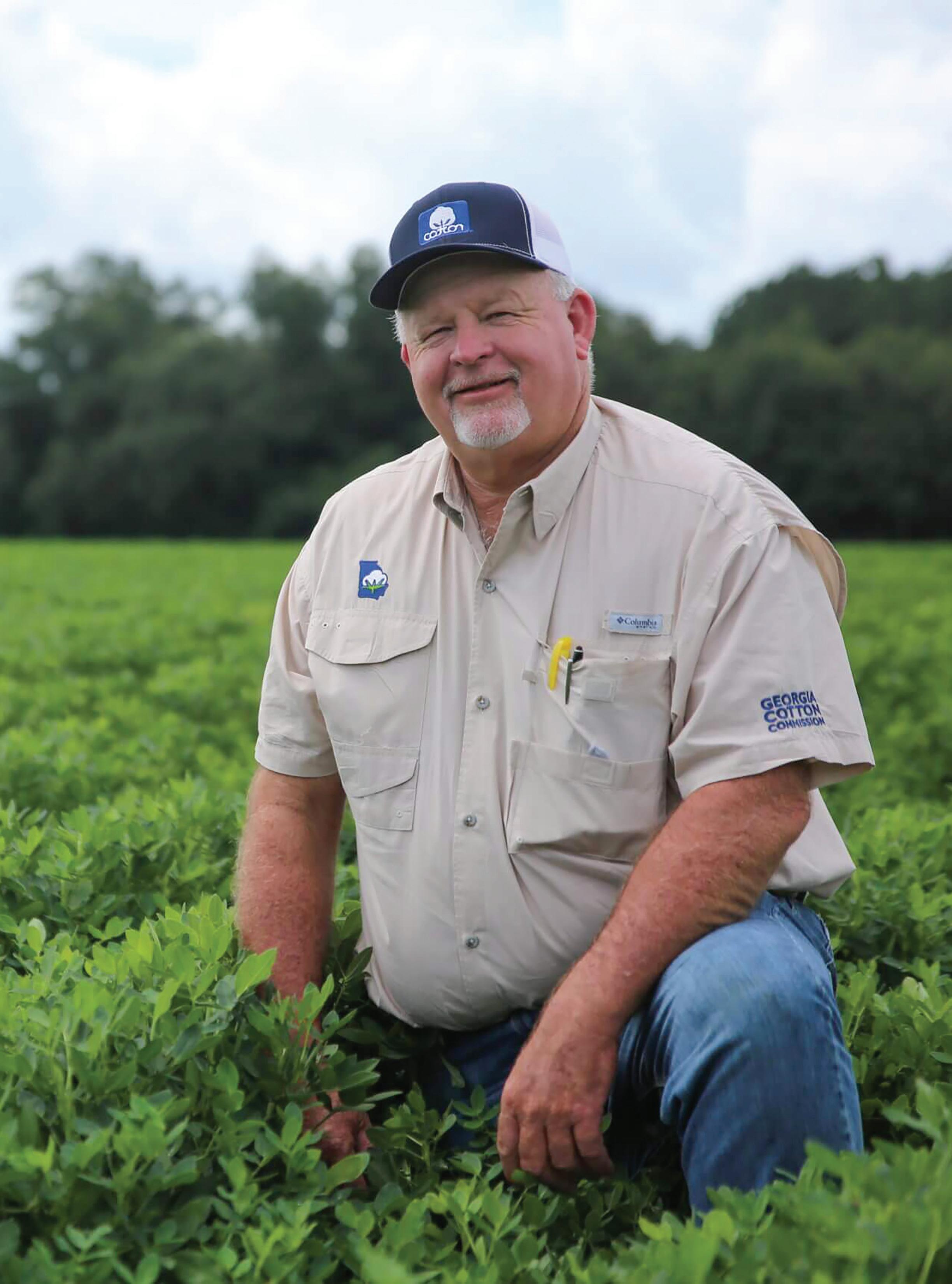
JOY CROSBY/GEORGIA PEANUT
PHOTO BY
COMMISSION
University of Georgia Extension recognized Bart Davis of Davis Family Farms as the 2023 Georgia Farmer of the Year at the recent Georgia Ag Forecast meeting in Tifton.
Pre-Plant Disease Management Tips
Based
As we head into the 2023 peanut season, many farmers are thinking about how to cut production costs while avoiding any negative effects on yield. This is not an easy task when we consider disease and nematode management.
Through observation of large-plot variety trials conducted at the North Florida Research and Education Center in Live Oak, Florida, and the Plant Science Research and Education Unit in Citra, Florida, three tips are offered at pre-planting. These tips can help producers effectively manage disease and nematode issues in their fields while possibly reducing input costs.
Tip 1: Select A Resistant Variety
Planting a disease and/or nematode-resistant variety can save on input costs related to both nematicides and fungicides. Large-plot research at the NFREC shows that varieties with disease resistance, such as Georgia-12Y, and nematode resistance, such as TifNV-High O/L, could improve yields by three-fold compared to Georgia-06G. Additionally, the soilborne disease resistance package of FloRun 331 improved yields by two-fold compared to Georgia-06.
Unfortunately, variety alone did not make up for the lack of rotation or a low-input fungicide program used in the trial. However, changes to the fungicide program will likely not be as extensive for the resistant varieties as it will be for Georgia-06G. Resistant varieties can also provide more leniency in delayed or missed fungicide applications and may provide some cost saving through reduced seed costs.
Tip 2: Understand The Soil’s Impact On Plant Health
If a field has an area that is slow to drain or can have pooling water, it is critical to think about the impact on yield. Root pruning due to excessive water can significantly reduce yields across varieties, which we observed in our 2021 large plot peanut trial at PSREU. The area had pooling of water throughout the season, and it led to a two-fold yield reduction.
Foliar disease was also observed to be higher in this area compared to the rest of the field, which could be attributed to the environment and plant stress. These areas can be important inoculum sources for the rest of the field and may require more intensive management programs if the water cannot be drained.
Tip 3: Nematode Management Must Be Planned Before You Put The Seed In The Ground
Once a peanut seed is planted, a farmer becomes a spectator when it comes to nematode management. The best thing to do
for nematodes is to plant a resistant variety. TifNV, and other resistant varieties, continue to reduce nematode populations dramatically in the field. It was observed in the 2021 large plot trial that root-knot nematodes were reduced by as much as 1,900 nematodes per 100 cc of soil when comparing TifNV to Georgia-06G.


Other integrated nematode management techniques, such as rotation to non-host crop and fumigants or non-fumigant (liquid/granular) nematicides, are useful for nematode management, too. However, varietal resistance tends to give more consistent results across sights and locations. If you are concerned about nematode issues, especially root-knot nematode, contact your local Extension agent or the nematode assay lab.
Trial Takeaways
One of the biggest things you can do to manage peanut
18 / THE PEANUT GROWER • MARCH 2023 PEANUTGROWER.COM
Yield results of the four varieties from the trial at the North Florida Research and Education Center in Live Oak, Florida.
on Florida research trials, these three tips can help producers effectively manage disease and nematodes.
Yield, in pounds per acre, results from the PSREU large plot trial comparing the replications in the wet soil/standing water area (wet) to non-water issues (dry).
disease and nematodes issues is select a resistant variety. However, there are times when understanding your field conditions (e.g. slow drainage areas and pest presence) can alter your decisions. Understanding your risk is one way to decide if a resistant variety is right for you.


Information on disease risk can be found at PeanutRx.org, and variety information can be found on the Florida Peanut
Team website at nfrec.ifas.ufl.edu/florida-peanut-team or Panhandle Ag e-news at nwdistrict.ifas.ufl.edu/phag. PG
Article by the University of Florida, Institute of Food and Agricultural Sciences’ Nicholas Dufault Department of Plant Pathology; Zane Grabau and Chang (Diana) Liu, Department of Entomology and Nematology.


MARCH 2023 • THE PEANUT GROWER / 19 TWITTER: @PEANUTGROWER
Aerial image of the large plot variety trials at the North Florida Research and Education Center in Live Oak, Florida, and the Plant Science Research and Education Unit in Citra, Florida, with single replications of the four varieties examined as labeled.
Root-knot nematode results from the PSREU large plot trial comparing samples from the variety treatments Georgia-06G and TifNV-High OL.
NFREC_SV
Disease results as a percent defoliation from the PSREU large plot trial comparing the replications in the wet soil/standing water area (wet) to non-water issues (dry).
PSREU
Peanut Pointers
Five Key Points On New Ground

In discussions this winter, growers seem to be interested in planting more peanuts in 2023 compared with 2022. The increase in the V-C region is likely to be modest and will depend on contracts. In our production meetings, I’ve been pointing out important things new peanut growers should consider. The points are also helpful for experienced growers who are thinking about picking up new land through expansion of acres.
First on my list was making sure zinc levels are not excessive. In North Carolina, we have a significant animal industry with a lot of waste that must be handled in an efficient and environmentally favorable manner. One important use is spreading waste on fields. But we know peanuts are very susceptible to zinc, so we should use caution in spreading or planting peanuts in fields that have a history of waste application.
If our NCDA&CS index is at 250 or above, I encourage growers to look for other fields. This is especially the case if soil pH is low. Soils with higher pH values are at less risk, but the 250 index needs to be taken seriously. There is no correction for zinc toxicity.
Second on the list is inoculation for nitrogen fixation. If the field has been out of production for a long time, or
if the field is considered new ground, the most important thing a grower will do (after checking the zinc level) is to make sure a liquid or granular in-furrow inoculant is placed in the bottom of the seed furrow.
Trial data in new-ground fields indicates that yields are 60% to 70% of optimum if there is an inoculation problem and a nitrogen deficiency occurs. There is a 40-to-1 return on investment in new ground from inoculation and a 4-to-1 return on an investment in rotated ground. Inoculant cost is about 1% of the total budget for most growers.



I also recommend placing a peat-based inoculant in with the seed in the hopper box for insurance on new ground fields or for fields without peanuts for many years. If the orifice gets stopped up on a planter unit, or something prevents live inoculant from reaching the bottom of the seed furrow, the peat-based product with seed will make a huge difference. Correcting a nitrogen deficiency will cost well over $100/acre when nitrogen fertilizer is broadcast over an entire field.
Third on the list was making sure pH across the field is around 6.0. If you are using one sample as the average for the field, lime to get pH above 6.2 to make sure the low pH spots are above 5.8. We have seen yield decreases when gypsum is applied to fields with low pH.
A fourth point is to make sure digging and harvesting capacities are adequate for the acreage you have. Availability of trucks for hauling to buying points can be a bottleneck, but making sure you can dig as closely to optimum maturity is important financially. Digging too soon because you have more acres than your equipment can get to in a timely manner, as well as digging fields too late because of the same issue, can result in significant yield loss.
The final point I’ve been making in these grower meetings is to get as much information on pests in the field as you can. If the field is a new one for you, there will be limited information on most soil-borne pathogens that impact peanuts. However, one should be able to get a handle on the weeds that are present by asking a few questions. A nematode sample can help you know populations and their distribution in and across fields. Cropping sequence for the past five or so years can also help you make an educated guess on potential problems. We can pencil in significant weed control costs in most fields. We also need a solid fungicide program for leaf spot (spores move around in air), and thrips and tomato spotted wilt control strategies need to be considered. Thrips are abundant across the coastal plain of North Carolina, and spotted wilt is vectored by this insect.
There are a lot of good things that can result from peanuts going into a new or relatively new field. We just need to make sure we are on top of things and get help developing an effective plan if you have limited experience on peanuts or if you find yourself planting into a new field.
20 / THE PEANUT GROWER • MARCH 2023 PEANUTGROWER.COM
DAVID JORDAN
North Carolina State University Extension Agronomist
Peanut Pointers
Weigh Planting Decisions
Growers are beginning to make many decisions for the 2023 production season. Each one of these carries a risk that will impact productivity and economic return. The UGA Peanut Team is about halfway through county production meetings where many of the team members are talking about some of the risks that were taken during the past growing season and the cost of these risks.
For example, many growers are now planting more acres in April as it may benefit their operation to finish planting early so they can plant cotton, or they may be trying to achieve the highest yield potential possible. There could be many reasons for planting early, some of which are not the wrong decision, as long as you understand the rewards versus risks.

Typical planting decisions should include the variety to be planted, the germination percentage of the seed, environmental conditions the week before and after planting and the insecticide and fungicide selections that should be applied in-furrow. All of these options need to be addressed so the best decisions are made to suit every grower’s farming operation, especially in April to early-May. The unfortunate situation, in most years, is Mother Nature does not cooperate, and some of our decisions will end up working against us.
As mentioned earlier, we talk about the risks of these decisions, but very seldom do we talk about the economic impact of those decisions. One reason we do not talk about it is because it’s a moot point. The damage is done, and we need to move forward. For now, let’s work to reduce the impact in 2023.

Let’s look at decisions regarding planting date and insecticides as they relate to Tomato Spotted Wilt Virus. In 2022, the weather was moderate, and growers decided to plant about half their acres before May 10, with an estimated 30% of acres not utilizing Thimet, the only insecticide shown to suppress the virus. Was this a bad decision? Not entirely. Looking at the past five years, growers have applied other insecticides and not experienced any issues. Unfortunately, it is a risky decision, and the worst-case scenario happened in 2022.

Based on a survey conducted by UGA Extension, TSWV averaged 19.3% to 27% in fields using insecticides other than Thimet and 9.7% for fields that used Thimet. The

economic impact of non-use of Thimet was estimated to be greater than $40 per acre, nearly one-third of the cost of a fungicide program. Is this a big enough economic impact for a grower to consider a different decision? In this situation, a change in planting date and/or insecticide could have reduced the risk and the potential loss in yield.
Looking forward to this growing season, growers should be sure to ask for the germination percentage of each lot they are planting. Do not plant a seed lot with reduced germination percentage or vigor in April to early May. Cool, wet conditions plus poor-quality seed will likely cause skippy stands, thus increasing the risk of TSWV significantly. Luckily, seed quality in 2022 was good and we did not experience any issues with stands. Poor-quality seed could have easily doubled the economic impact experienced from TSWV.
Every grower has to make some tough decisions regarding their whole operation. We are here to provide you the information and help to weigh the risks so that you can achieve the highest level of productivity. Please call your local county agent if you need any help.
Plant To Irrigation Capacity
The 2022 growing season was one of the toughest, most challenging seasons for Southwest growers. We are glad that we can finally put 2022 behind us and think about the 2023 season. However, the National Weather Service forecast through April 30 shows persistent drought in the peanut-growing region of the Southwest.
Although fertilizer costs are lower than at the same time last year, the price is still higher than the five-year average. Supply chains are slowly getting better, but other input costs are still higher than past years. We can hope 2023 may not be as challenging as 2022; however, it is always best to prepare detailed plans for optimizing profitability.
When expecting a dryer-than-normal year, optimizing water-use efficiency is the most important management decision you can make. We rely heavily on irrigation for peanut production as our precipitation is not sufficient to produce optimum yields. “Plant the peanut to irrigation capacity” is something that I always repeat when drought is forecast ahead of us. Splitting the circle with other crops such as cotton, with a season water use of 12 inches to 24 inches, sorghum, at 20 inches to 22 inches, and sesame, 16
MARCH 2023 • THE PEANUT GROWER / 21 TWITTER: @PEANUTGROWER
EMI KIMURA
Texas A&M AgriLife Extension State Extension Peanut Specialist
SCOTT MONFORT University of Georgia Extension Agronomist
Peanut Pointers
water for the season.
Growers ask what inputs they can reduce to lower the total input costs. There are no unnecessary inputs to grow crops, especially fertilizers, herbicides and fungicides. It is better to plant fewer acres that can be fully managed with necessary inputs. It is too risky to reduce inputs because there would be a yield penalty to do so.
Soil testing is especially recommended to optimize input costs. Understand the residual soil nutrient levels so that fertilizer amounts can be effectively adjusted. If crops were not harvested in 2022 because of drought, if fertilizer was applied, there is higher probability that soils contain an increased amount of nutrients, depending on the rainfall received.
inches to 18 inches, may be a good idea to increase available water for peanuts with realistic yield goals. Shorter maturity market-types, such as Spanish and Valencia, also use less
Help With Variety Selection
There are no silver bullet in-furrow and foliar products that magically solve all the problems we face in this tough season. If such products are recommended to you, always request university trial results and consult with your county agent.
KRIS BALKCOM Auburn University Extension Specialist

As of now, it is hard to imagine what the weather will be like at planting since we have been so wet lately. However, a third year of a La Niña weather pattern is forecast and likely means warmer temperatures and dry conditions again at planting, which leads to earlier pest pressure.

There are always tough decisions to make on the farm, and picking the correct variety is a critical decision. Because of this, our research station and on-farm trials are important tools to help you determine the right variety for the location and accompanying crop pressures.
This past year, we increased the number of Official Variety Trials across the state and planted varieties at multiple on-farm locations to determine how each variety would respond to different soil types, weather patterns, pests and disease pressures. The more information we can provide, the better prepared peanut producers are to manage the crop throughout the year.
A review of yield and grade information for each location in addition to a total dollar value average for the location or multiple years per location can help you make


the best decisions for 2023. The AU Variety Selection Platform is still a relatively new tool that growers can use to determine what varieties consistently perform well in a given region. The Platform also gives considerable production information and weather data from the various research sites, as well as the bulletin “Preliminary Performance Of Peanuts In Alabama, 2022.”
The AU Variety Selection Platform can be found at auburn.medius.re/. PG

22 / THE PEANUT GROWER • MARCH 2023 PEANUTGROWER.COM































































































































Don’t get booted! Don’t get booted! Renew your FREE Peanut Grower subscription to ensure you stay on our mailing lists! Scan the QR code with your phone to renew today! Scan Here SCAN here Connect with us on social media PeanutGrower@PeanutGrower@ ePeanutGrower IMAGE BY RAWPIXEL.COM ON FREEPIK
RELIABLE TRUSTED QUALITY
With

Exceed® SAR for Peanuts. MORE than just a seed inoculant.



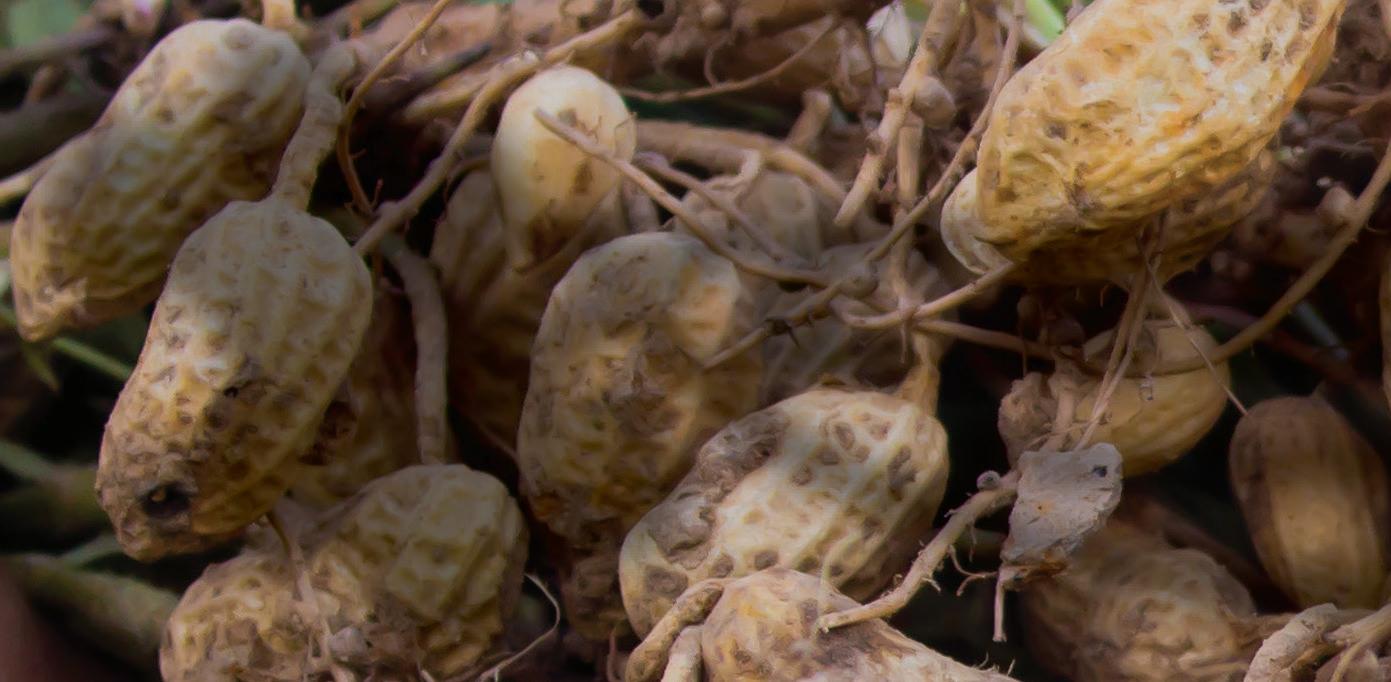
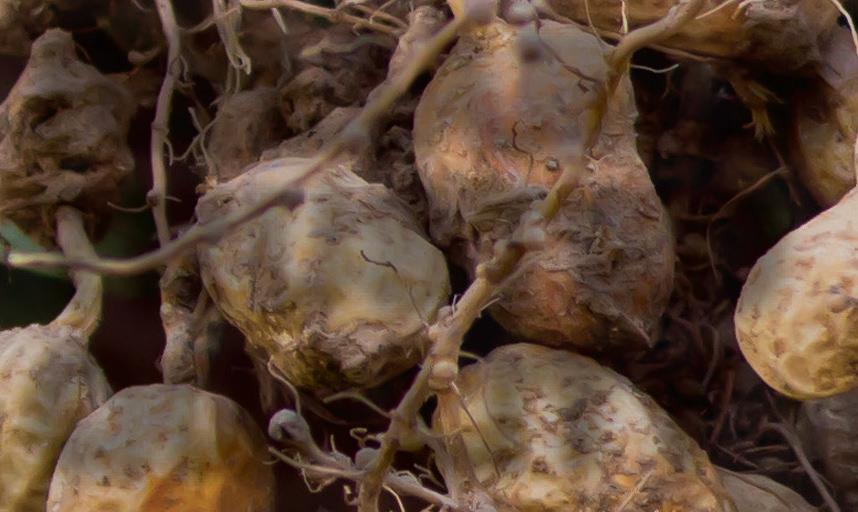


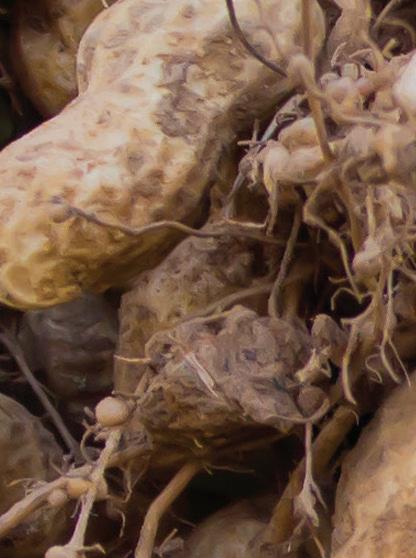
The EPA Registered SAR Component:
• Provides protection against fungal infections such as damping-off and white mold

• Interrupts the life-cycle of the root-knot nematode




• Elicits the plant enzymes for vitality
•Elevates the innate immunity defense mechanism of the plant

• Boosts germination and builds a stronger root system



•Increases yield - trial results show an average increase of 434 pounds per acre




Exceed® SAR is guaranteed not to be harmful to costly seeds and is compatible with all seed treatments.
To learn more, contact your local dealer today.

EXCEED® brand inoculants
can always count on quality, reliable products at a great price with exceptional service. 1092 S Graham ST | Henrietta, TX 76365 | (940) 264-0343 visjonbiologics.com
you
EXCEED® SAR INOCULANT TRIALS - PEANUT +239 Lbs/A Above Competitor 5600 5700 5800 5900 6000 6100 6200 Yield (Lbs/A) Exceed SAR 6151 Competitor 5915 South Georgia2021 & 2022 (2-Year Average) +562 Lbs/A Above Control 4000 4200 4400 4600 4800 5000 5200 Yield (Lbs/A) Exceed SAR 5143 Competitor 2 4864 Control 4581 Competitor 1 5008 North Carolina2022 (1-Year Average)

















 AMERICA’S PEANUT FARMERS
AMERICA’S PEANUT FARMERS















































































































































